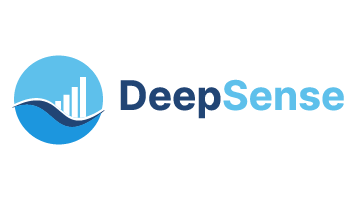The landscape of the field of Artificial Intelligence (AI) and Data Science is constantly evolving. In recent years the increased availability of greater computation power has allowed for training and deployment of larger, more complex models than ever before. The past couple years have been revolutionary for AI, especially in the field of generative AI with Large Language Models (LLMs) like ChatGPT and Claude taking the spotlight, along with text to image/video models like Dall-E, Stable Diffusion, Midjourney and Sora. With all the hype surrounding this exciting field, it’s important to sift through the noise and focus on trends that will impact industry and by extension, the general public. Here are some of the most important and impactful trends in data science in AI to watch out for in 2024.
Retrieval-Augmented Generation (RAG)
Generative AI is powerful but is usually limited by its training data. Once a model has been trained, it will not be aware of new developments in the world that happened afterwards and has a knowledge cutoff date. LLMs tend to extrapolate when facts aren’t available, so they confidently make false but plausible-sounding statements when there’s a gap in their knowledge. These are called AI hallucinations. RAG is a method that not only generates content, but also retrieves relevant information to ensure context specific accuracy. Blending text generation with information retrieval, it reduces hallucinations in AI-generated responses. This technique is a game-changer for enterprise applications, enhancing the accuracy and contextuality of AI outputs.
Customized Enterprise Generative AI
Customized enterprise generative AI models offer tailored solutions that can significantly enhance efficiency, accuracy, and data privacy compared to one-size-fits-all models like ChatGPT. For instance, in healthcare, a customized model can predict patient outcomes based on specific demographics and medical history, offering more precise care plans while ensuring sensitive health data remains protected within the organization. In finance, a bespoke fraud detection system can learn from a bank’s unique transaction patterns, reducing false positives and improving security without exposing customer data externally. Customization not only boosts performance but also strengthens data privacy by limiting external data exposure.
The Power of Open-Source Models
In a move towards data democratization, open models like Mixtral and Llama 3 are breaking barriers. These smaller, more efficient models run on less hardware, making sophisticated AI accessible to all. They’re not just about inclusivity; they’re about revolutionizing AI’s reach, from edge computing to privacy-enhanced local processing. For example, in agriculture localized models can process data directly from field sensors for real-time crop monitoring, reducing the reliance on external cloud services. In healthcare on-device patient data analysis can ensure privacy while providing real-time insights.
Edge computing
Edge computing is a distributed computing technology that is becoming increasingly popular. It involves processing data closer to its generation source, instead of gathering huge amounts of data in one place to train models. As the volume of data continues to soar, edge computing will become the backbone of real-time analytics. This will empower industries such as healthcare, manufacturing, and finance to harness data at its source, enabling swift and precise decision-making- and eventually, laying the foundation for the era of the Internet of Things (IoT).
Federated Learning
Federated learning is a decentralized approach of model training that enables multiple participants to collaboratively train a model while keeping their data localized and private. This method stands in contrast to traditional centralized machine learning approaches where all data is collected and processed in one central location. By training models across decentralized devices without sharing raw data, it upholds privacy without compromising on collective intelligence. It’s a testament to the fact that in the age of data, privacy and progress can coexist harmoniously.
Increase in AI and ML Talent Demand
The quest for AI and machine learning talent mirrors the Gold Rush, driven by the need to bridge theory with practice. The demand for professionals skilled in AI programming, data analysis, and MLOps is skyrocketing, marking a pivotal shift towards building internal AI capabilities as a cornerstone of digital transformation.
AI Reality Check
Organizations are grappling with the challenges of integrating AI into their operations, from data quality to ethical concerns. Data privacy is being addressed through enhanced encryption and federated learning, ethical guidelines and review boards are being established to manage ethical concerns, API-based integrations facilitate smoother AI integration into existing infrastructures, data governance frameworks are improving data quality, and partnerships between academia and industry, along with internal training programs, are mitigating the talent gap. This phase, often termed the “trough of disillusionment,” is not a setback but a stepping stone towards mature, impactful AI adoption.
